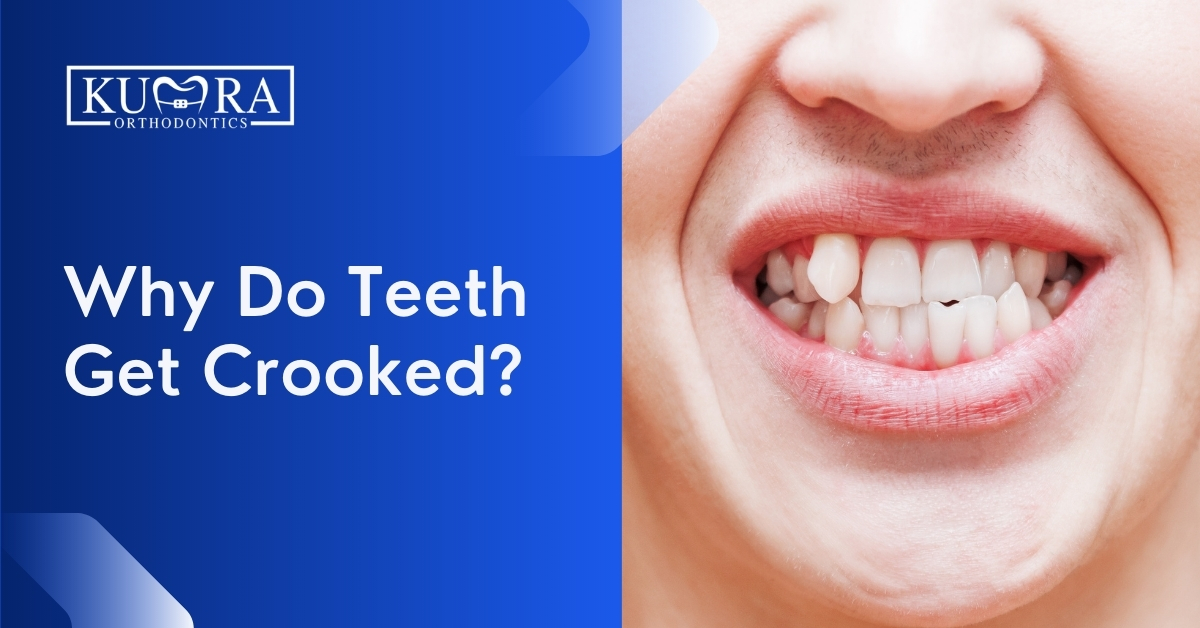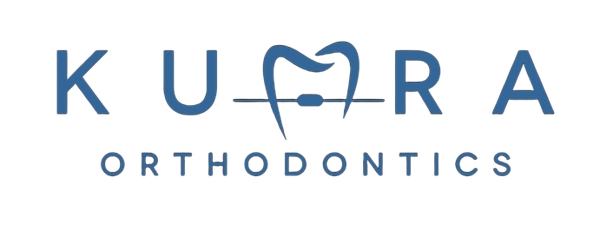Numerous factors may affect the size and position of your teeth. This includes some dental practices such as tongue thrusting or even genetics!
Crooked teeth can make you feel self-conscious about your appearance. Your bite is affected when your teeth are not lined up properly (misaligned). The condition may make certain foods difficult to chew and may lead to some teeth becoming worn down. Additionally, you may also experience tension in your muscles.
What Causes Crooked Teeth?
Thumb Sucking
A child sucking on the thumb early on should not worry parents. It is fine if parents do not allow the practice to continue for too long. Children who continue to maintain their thumb-sucking habit after the eruption of their permanent teeth can encounter problems.
Continually applying pressure to the still-growing gums causes the teeth to grow crooked, especially outward when this habit persists until toddler age, the likelihood of developing crooked teeth increases.
Tongue Thrusting
The same affects the teeth as thumb sucking. The result can be misaligned bites, especially the overbite, which results in protruding upper teeth.
The pressure applied by the tongue on the back of the teeth can cause your front teeth to move outward. Consequently, a gap, or open bite, is created between your middle top and bottom teeth.
Untreated tongue thrust can cause long-term speech impairment, such as a lisp over particular sounds. It can also extend your face and cause your tongue to protrude from between your teeth.
Misaligned Teeth
Malocclusion occurs when the jaws are smaller than usual, causing some teeth to be out of alignment.
An overbite or an underbite is the result of misaligned jaws. Overbite causes the upper teeth to protrude over the lower teeth, and underbite causes the lower teeth to protrude over the upper teeth.
Genetics
Crooked teeth are frequently passed down to children from their parents. If crooked teeth run in the family, the children will certainly have crooked permanent teeth despite strong dental hygiene routines.
While genes cannot be changed, an orthodontist can develop strategies for removing space, filling gaps, and aligning teeth.
Facial Injury
In the case of a jaw injury in childhood, displaced teeth or misaligned bites may result from trauma to the face. This is because the jaw has shifted slightly from its initial position, causing the teeth to grow crooked.
A facial injury may result in the loss of teeth. Teeth tend to shift to fill in open spaces in the jaw when there is an open space.
Related: Is Invisalign Treatment Effective in Closing Tooth Gaps?
Health Problems Caused by Crooked Teeth
Gum Disease
Straight teeth are frequently healthier teeth since they are easier to maintain. Teeth that are not straight or overlap can be difficult to clean thoroughly and effectively. This can result in plaque and bacteria buildup, which can lead to various oral health issues such as cavities and gum disease.
If left untreated, gum disease can proceed to periodontitis, resulting in tooth loss and bone problems.
Chipped teeth & jaw pain
As crooked teeth produce excessive wear and strain on teeth, they may make them more susceptible to tooth damage. Additionally, this increased wear and tear can place undue strain on the jaw joint, causing jaw pain or even TMJ/TMD.
Sleep Apnea
Crooked teeth not only contribute to oral health issues but also to overall health concerns. Sleep apnea is a lesser-known adverse effect of crooked or overlapping teeth. Patients with a small jaw are more likely to have overcrowded teeth, making it difficult to breathe.
When the jaw is too narrow, we tend to shove our tongues into our teeth or rest the tongue in an uncomfortable position, putting excessive pressure on the teeth and causing them to move. Due to a shortage of tongue space, the tongue may fall back and block the throat while sleeping, resulting in sleep apnea.
Sleep apnea is a dangerous condition that causes patients to stop breathing many times at night and raises the risk of hypertension, stroke, and heart attack.
Needing an orthodontic appointment?
Visit Kumra Orthodontics Washington, DC or Kumra Orthodontics Stafford, VA, and request an appointment with us!
Orthodontic Treatments for Crooked Teeth
Treatment for teeth straightening will vary according to your specific goals, the state of your oral health, and the complexity of your orthodontic difficulties. Your Kumra Orthodontics dentist will assist you in determining which orthodontic treatment options will yield the best outcomes for you.
Invisalign
Invisalign is a discreet alternative for teen and adult patients to correct misaligned teeth painlessly. Invisalign is a clear aligner braces system that is barely noticeable to others when worn. Your Kumra Orthodontics dentist will provide a series of transparent aligners to shift teeth into proper alignment gently.
This series of custom-made aligners are clear, plastic, ultra-thin aligners tailored to each patient’s specifications. In roughly 12-18 months, patients will have straighter teeth.
Read More: How Does Invisalign Work?
Dental Braces
Typically, dental braces are used to correct crowded teeth, crooked teeth, and misaligned jaws, which are known as malocclusions. Braces are built of metal or ceramic, wires, and a bonding substance that is used to adhere them to your teeth. Typically, braces are used by kids and teens, but more and more adults are getting corrective dental braces in their adult years.
Read More: Kinds of Dental Braces and What’s Best For You
Dental Veneers
The front and sides of a tooth are fitted with long-lasting permanent dental restorations. Dentists use dental veneers to treat a single tooth or a group of teeth with a thin ceramic shell permanently attached to the tooth.
Dental Crown
A dental crown is a tooth-shaped cap that is permanently cemented to the tooth. The crown provides both elegance and long-lasting usefulness. Dental crowns can be color-matched to blend in with your smile for a more natural appearance.
Related: Can You Get Invisalign If You Have A Crown?
Frequently Asked Questions about Crooked Teeth
How much does crooked teeth treatment cost?
The cost of straightening crooked teeth varies according to your teeth and the treatment method you choose. Treatment goals, length of treatment, and your current tooth structure can all be variables.
You will receive an estimate of the cost and payment options during your consultation visit with your dentist or orthodontist.
What can I expect during my initial consultation?
The orthodontist will most likely take X-rays, photos of your face, and tooth imprints to determine if and what type of treatment is needed. X-rays indicate the location of your teeth and roots, as well as whether or not any teeth have yet to erupt from beneath the gums.
Cephalometrics or panoramic X-rays illustrate the relationship between the teeth and the jaws, as well as the jaws and the skull. Your orthodontist may also want to take regular pictures of your face to understand better the interaction between your teeth, jaws, and head.
Dental impressions may indeed be taken. This is achieved utilizing the iTero scanner, which uses cutting-edge optical technology to capture the teeth and gums’ structure digitally. The scanner is a small, portable wand. Once your orthodontist starts the scanning procedure, it can be paused and restarted as often as needed.
Find out more about crooked teeth by contacting Kumra Orthodontics
Correcting crooked teeth has many benefits, including healthier teeth and gums, improvements in facial structure, and an increase in self-esteem. Contact an experienced local orthodontist today to ensure the best possible results.



